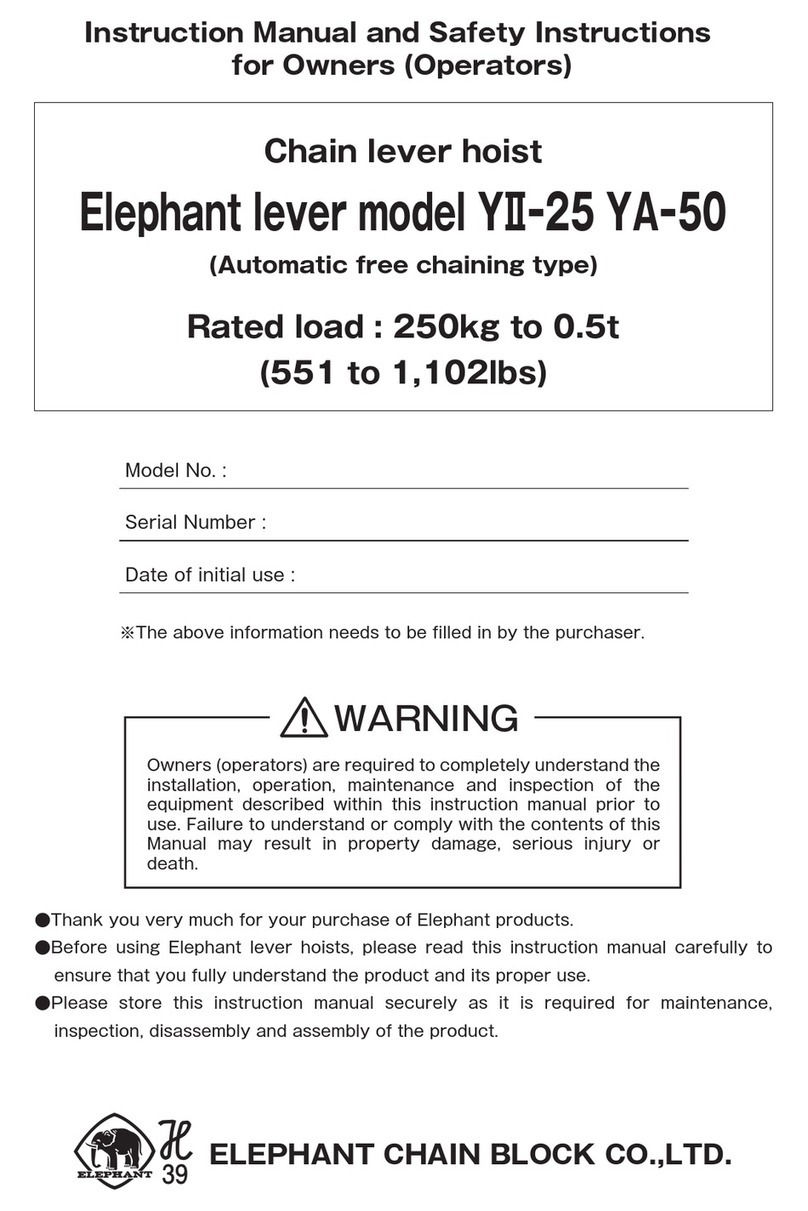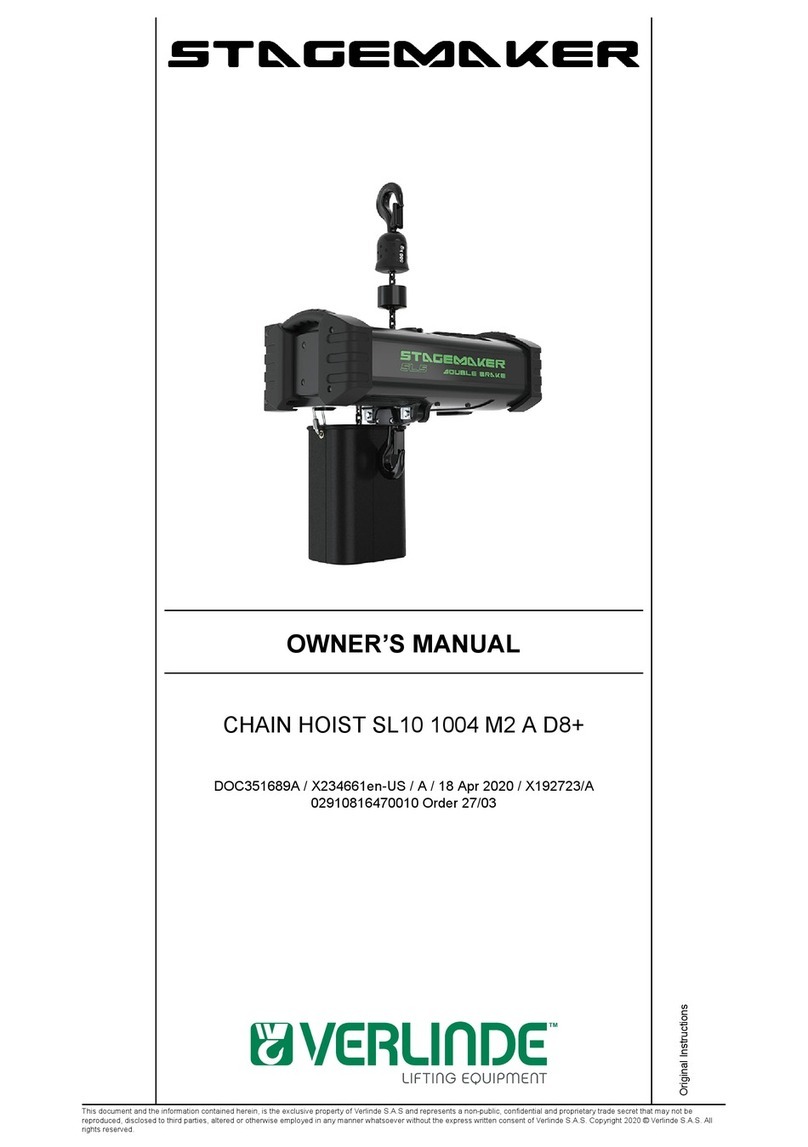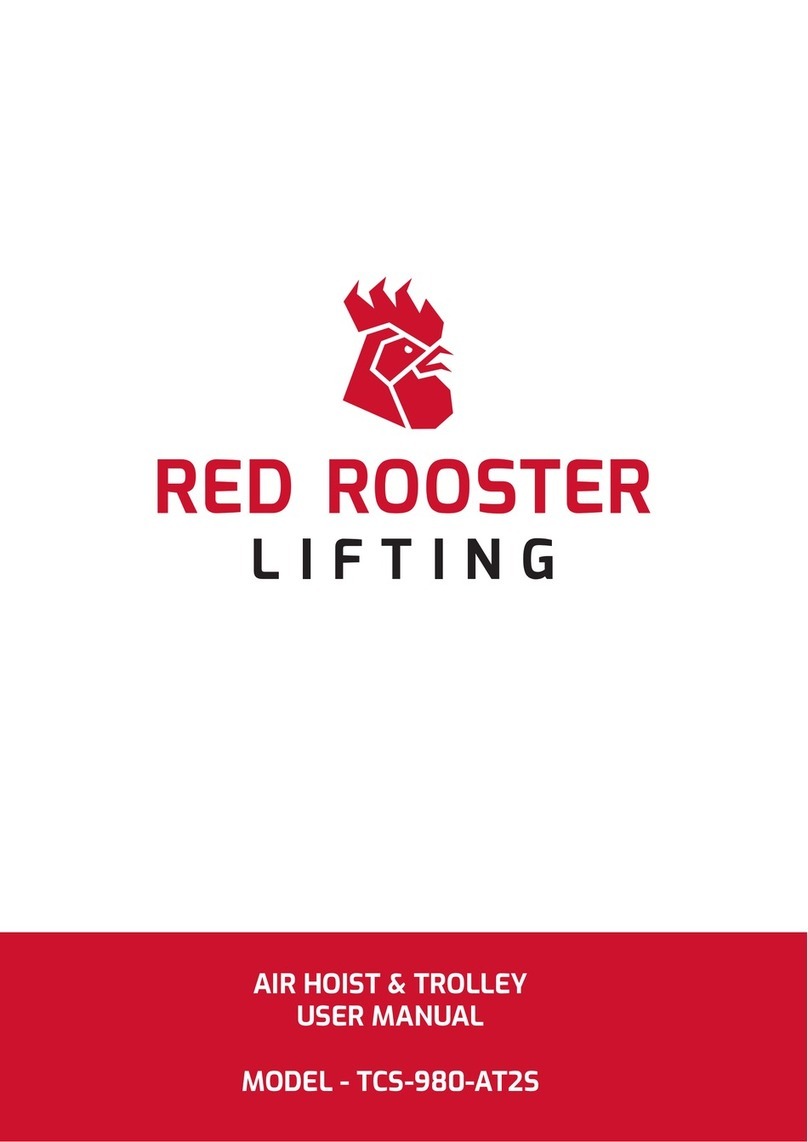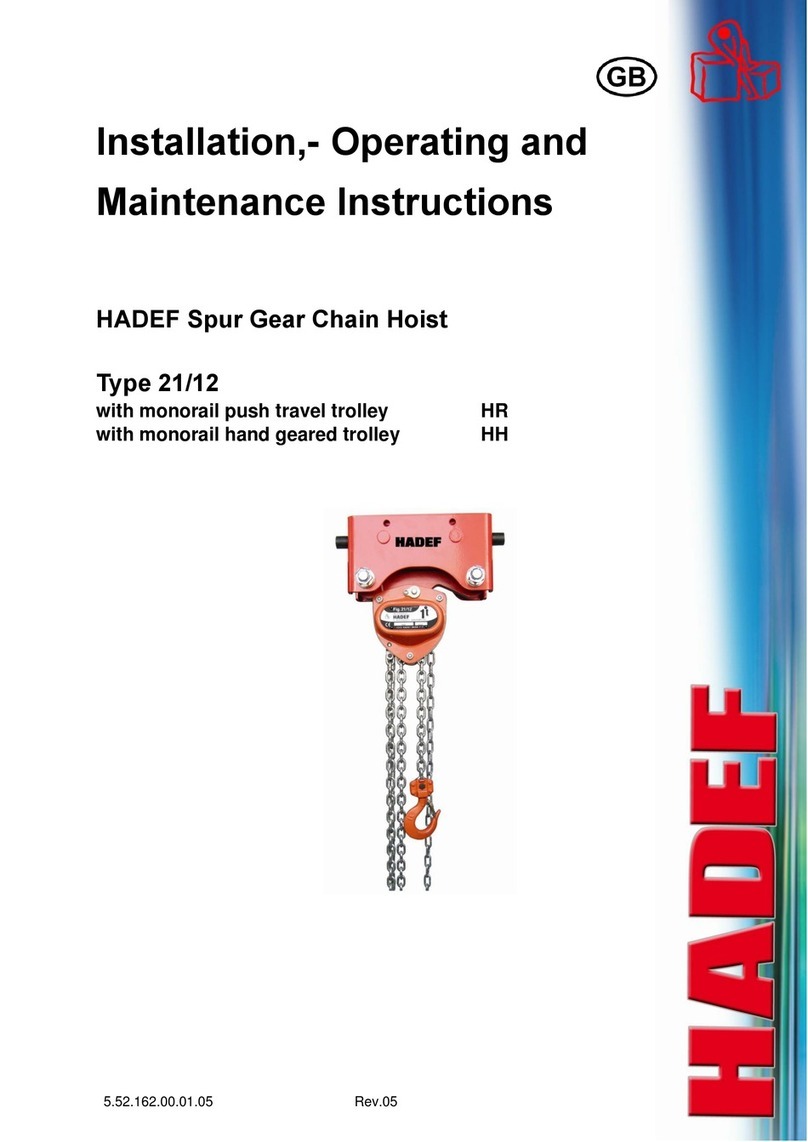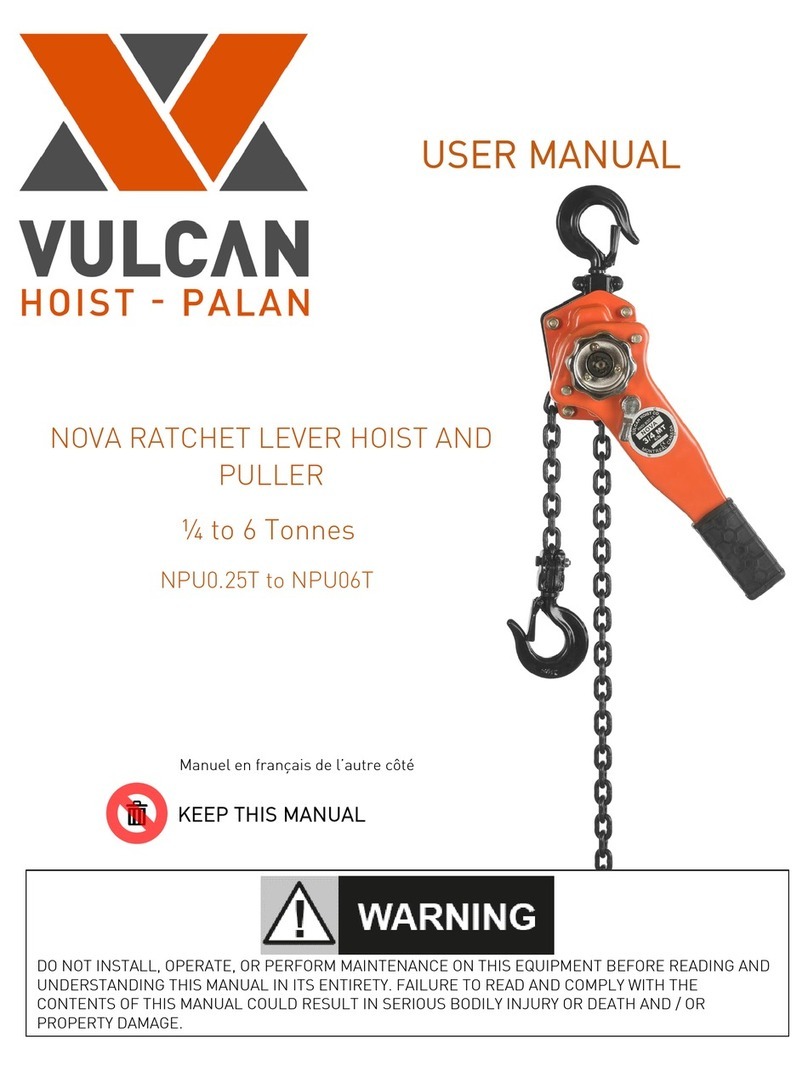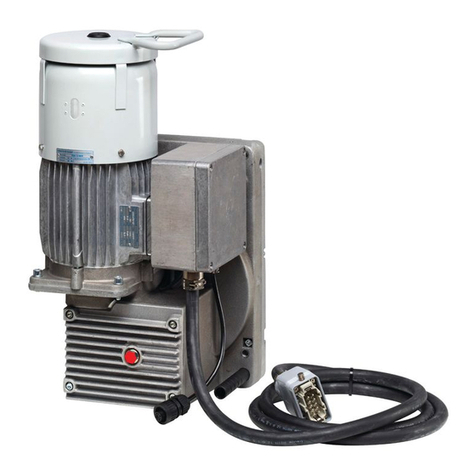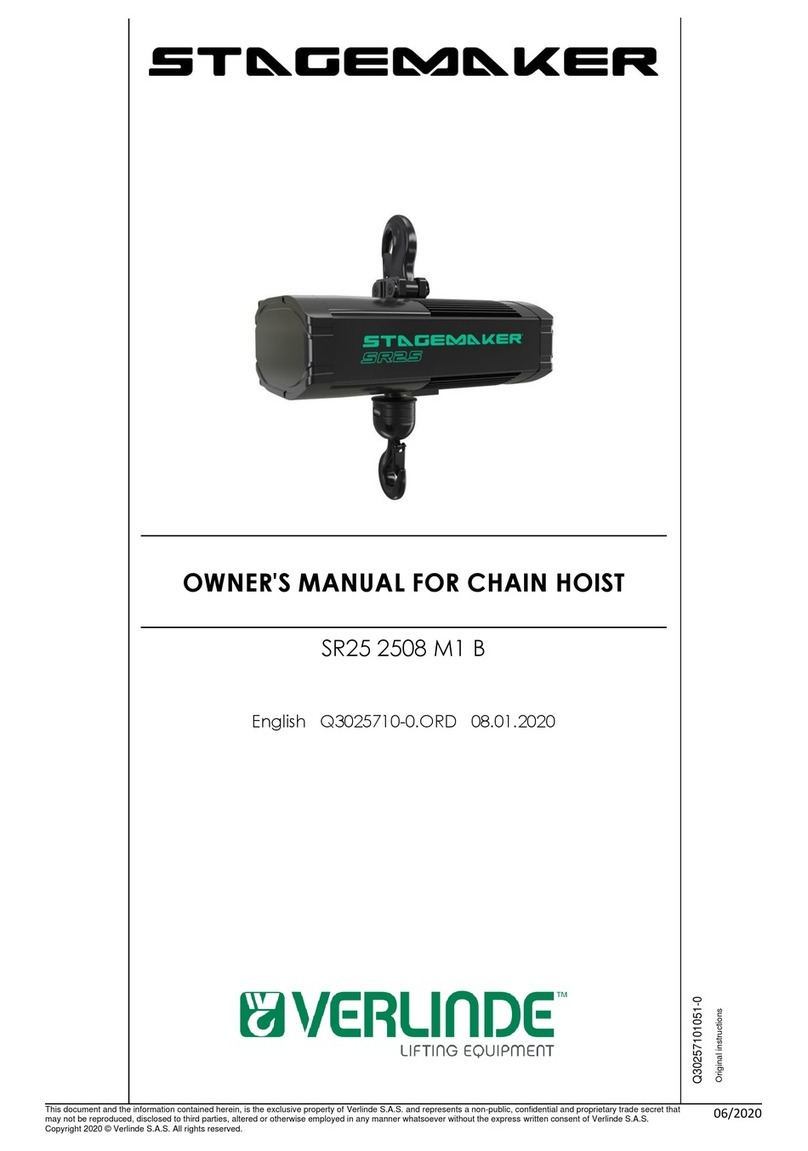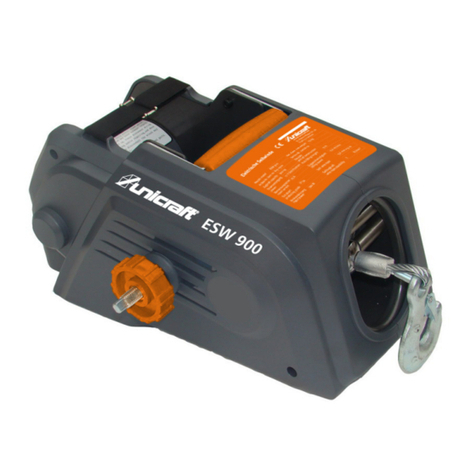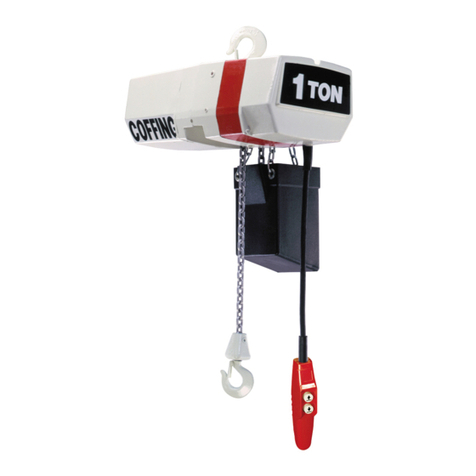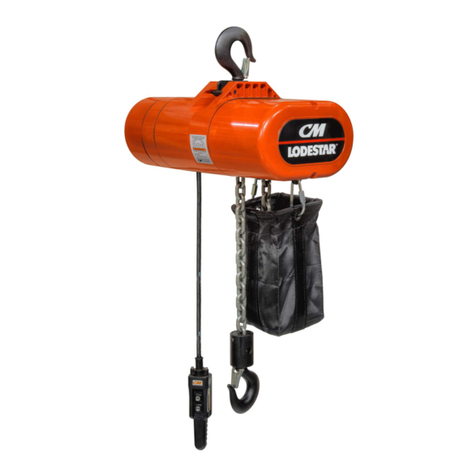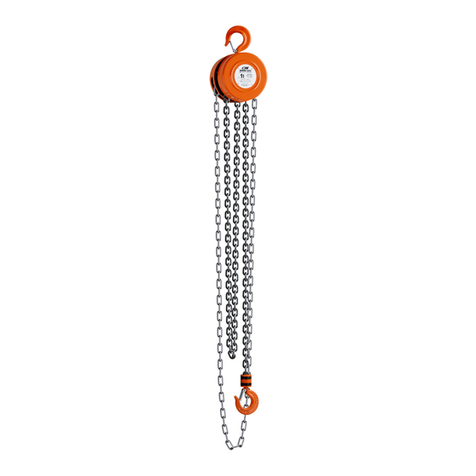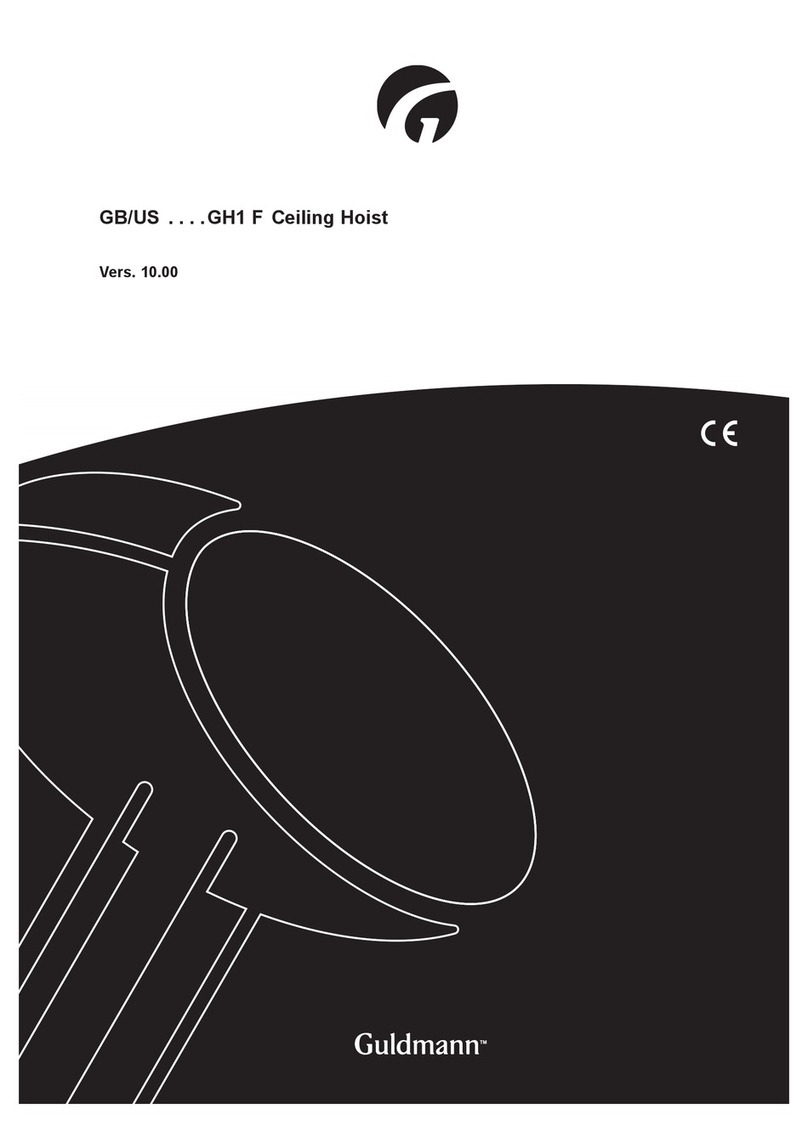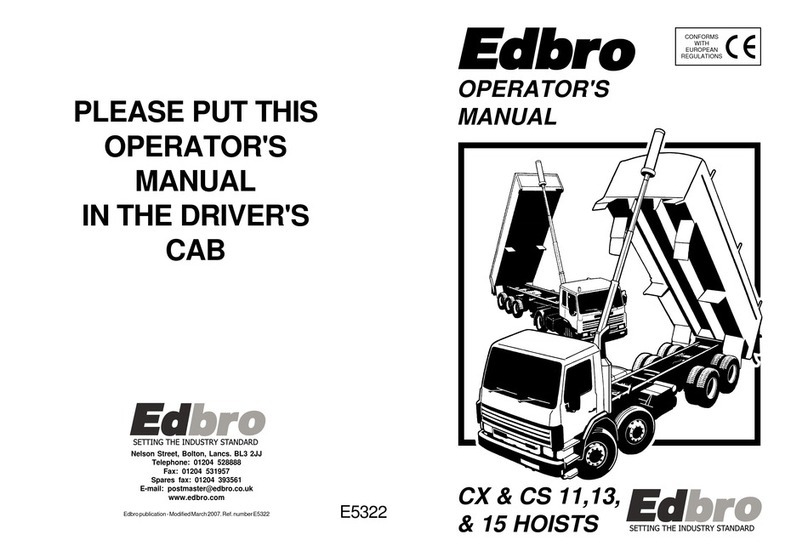
8
DISASSEMBLY & REASSEMBLY
For ease of disassembly, the following disassembly steps may not, where conditions permit,
be completed before hoist is removed from its overhead suspension or disconnected from
its air supply. If the hoist is in use, remove the chain container. Remove lower block and load
chain assembly.
Handle the parts with care when disassembling and reassembling the hoist. Carefully apply
pressure evenly when removing and installing parts with press ts. On ball bearing, apply
pressure to the side of the inner or outer race, whichever is adjacent to the mating part. Apply
a thin lm of oil to parts having a tight t when installed.
Diassembly
Removal of Hoist from Overhead Suspension
1. Turn o source of air
2. Operate control to discharge the air from the hoist.
3. Disconnect air hose at inlet swivel
4. Remove hoist from overhead suspension
Removal of Lower Block and Load Chain Assembly
1. Disconnect end of load chain from the tail end. Anchor the side of the hoist frame on
models with single reeved load chain (300, 500, and 1000lb). Remove socket head cap
screw, holding end link to tail end anchor on coil chain. Run the chain out of hoist by
operating control in “lowering” direction when the hoist is connected to an air source. The
chain can be pulled out of the hoist when it is connected to an air source.
2. Run chain out of hoist by operating it in “lowering” direction, and disconnect opposite
end of chain from anchor at side of upper suspension bracket on models with double
reeved chains (2000lb,).
3. Separate load chain from lower block assembly in single reeved 300, 500, and 1000 lb.
models. Drive out small pin securing lower block pin in lower block and push out block pin
to release chain.
4. Lower blocks (300, 500, and 1000lb.) are of a pinned construction, permitting
individual replacement of body, thrust bearing, or hook. To disassemble, drive spring pin
from hook nut: Remove the pin, hold hook nut from turning with drift punch and rotate
hook to unscrew it from nut. Separate hook, bearing shield, needle bearing and tow thrust
washers from body. Hook and nut are drilled at assembly. And they are replaced only as
an assembly.
5. The lower block assembly is disassembled by removing the socket head screws and nuts
holding the body halves together on 2000lb. (double reeved) models.
Removal of Brake Cover, Control Lever and Load Brake
1. For convenience, disconnect control hoses from air cylinders, open strain cable “S” hook
at eye bolt on throttle housing and remove pendant throttle control assembly from hoist on
pendant throttle control. See “Disassembly and Reassembly”, page 8, for disassembly and
reassembly of pendant throttle control.
2. Take out the two screws securing the brake housing cover to frame and lift o the cover.
3. To remove control lever and shaft, drive spring pins from control lever (Image 10) and valve
shifter at end of shaft using a drift punch. Lightly tap valve shifter end of shaft and withdraw
shaft by pulling on brake cam end (Image 11). Valve shifter and control lever will fall free as
shaft is withdrawn.




















